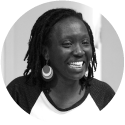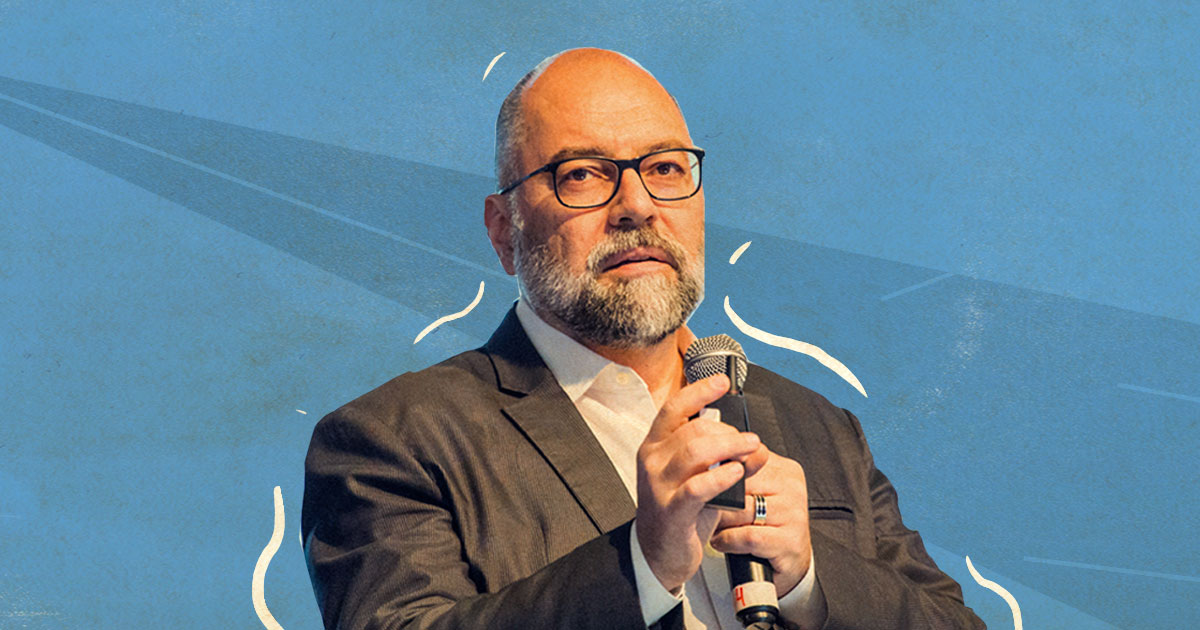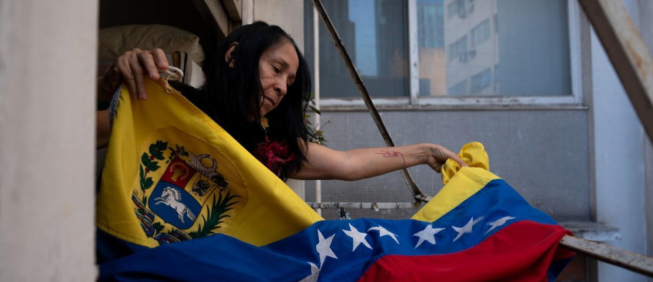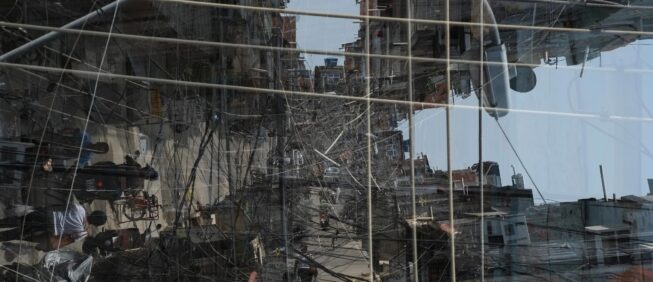Ricardo Henriques
“A propositive agenda for public schools: the production of sense and actions for disputing equity"
Patrícia Santos
| Brazil |
19 de December de 2019
translated by Edmund Ruge
Patrícia Santos: What elements in the construction of the myth of failed public schools and private school superiority do you think are worth highlighting?
Ricardo Henriques: There exists a breadth of literature that creates an enormous difficulty for advancements in the agenda of republican, lay, public schools, based in the argument that public schools are unable to teach and their students are unable to learn. The vision organized in this way is obviously the expression of a prejudice that attempts to attribute to public schools a certain impossibility in realizing their mission. In general, this reading expresses, on one hand, a manipulation of evidence, and on the other, an easy agreement with the prevailing common sense… one that has great difficulty in recognizing the public sector's responsibility for producing quality policy, in particular in the area of education.
There is an environment that negotiates and dialogues with this banalization of public schools, that treats this incapacity to educate students as an essential attribute. This is clearly an expression — or an act of bad faith — of a lack of commitment to evidence, or of a certain type of opportunist game, that, in some form, ratifies our current patterns of inequality.
This allegorical vision that places public schools in an impossible situation is of the same nature as the act of seeing the Brazilian social phenomenon and saying that the environment present in popular areas is one of fragility, one of absence. It is the same analytical matrix that holds the two hostage in conditions of impossibility.
"This allegorical vision that places public schools in an impossible situation is of the same nature as the act of seeing the Brazilian social phenomenon and saying that the environment present in popular areas is one of fragility, one of absence. It is the same analytical matrix that holds the two hostage in conditions of impossibility. Just as in popular spaces, we have instances of enormous potency: public schools have the absolute capacity to generate consistent results."
Just as in popular spaces, we have instances of enormous potency: public schools have the absolute capacity to generate consistent results. That said, we cannot deny the enormous historic debt that we have, nor the deficit in performance, both of which must be confronted immediately.
We have to separate certain things, for example, understanding the differences between school performance levels and the profile of the students in contextual relations. In this context, we have relatively perverse situations.
As a key example, a school situated in an environment of high urban violence, what is the perverse effect that arises from this? As a rule, public school networks allow more experienced teachers to choose where they teach based on location, with expectations in function of something that is reasonable, at least, in charting the distance between where the teacher lives in relation to the school where he or she teaches. This hypothesis is reasonable. It is interesting that the person can have this choice, but then what happens? More experienced teachers end up not choosing areas affected by intense urban violence.
"This reading expresses, on one hand, a manipulation of evidence, and on the other, an easy agreement with the prevailing common sense… one that has great difficulty in recognizing the public sector's responsibility for producing quality policy, in particular in the area of education."
This sets off a self-fulfilling prophecy — and that is just in terms of violent territories and the choices of more experienced teachers. Therefore, less experienced teachers end up teaching at these schools. And it is also common that these schools in violent environments also have a history of social vulnerability and high age-grade distortions among students. This establishes a chain of factors that make pedagogical work much more difficult.
There are also schools that select their students' initial profile… expensive, private schools that, due to their economic resources, exercise a selection bias in their students, who are in general the children of families with high educational backgrounds.
Public schools that require entrance exams, typically technical schools, do the same. These schools do not express the heterogeneous reality of a territory. They bring in students with lower age-grade distortions and students with better academic performance. These schools are also chosen by more experienced professors. So this selection bias ends up occurring in public as well as private schools, with better students and more engaged professors. The inequality is evident in this situation.
"So this selection bias ends up occuring in public as well as private schools, with better students and more engaged professores. The inequality is evident in this situation."
What, then, does the situation demand of us? We have to deconstruct this normalization of public schools as places of impossibility. We must create appropriate conditions for practices in schools in situations of vulnerability as well as appropriate conditions for achieving positive results. This is clearly an arduous task, in that we live in a radically unequal society, a society with various structural inequalities.
Often, international comparisons lose their potential for public policy application, as they are comparisons made with States and societies with much lower levels of inequality than Brazil.
When you make a linear juxtaposition, without any change, without any reflection on the need for customization, of adjustment to our reality, the potential for adaptation reveals itself as farcical.
Finland has undertaken an interesting, radical movement that involves valuing teachers. This first began at the turn of the 1970s, with motions to value teachers and transform the role of a teacher into an attractive one — from a salary standpoint, but also socially, equivalent to other liberal professions. And from there, the tendency toward lower education levels begins to revert. It is obvious that this must be done in Brazil — valuing teachers. But the manner of valuing is not the same in a society as unequal as ours.
You therefore have various fundamental adaptations in the process of selection, but perhaps the most important element is thinking about how to create learning for all. That is to say, create a vision of equity, with high academic performance among students, seeing to it that quality is something that results in all students staying in school and all students learning. And this means learning more than just what is necessary in cognitive terms, it involves learning the dimensions of a society of contemporary knowledge, an inclusive one, learning not by just assimilating cognitive knowledge, but by establishing as fundamental the act of understanding the need to, throughout the educational cycle, generate equality of opportunity.
"We must create appropriate conditions for practices in schools in situations of vulnerability as well as appropriate conditions for achieving positive results. This is clearly an arduous task, in that we live in a radically unequal society, a society with various structural inequalities."
There is a sort of trap that exists when interpreting equality of opportunity, which is in thinking that it is enough to resolve the problem at the initial moment: in student enrollment. Even if this were possible — as it is no trivial task — without careful attention to this process, at the end of first, second, third grade, structural inequalities in society will be created again. Thus, public schools, with their social responsibility, are much more important than private schools, in that they are responsible for generating public goods. Public schools should be dedicated, in an obsessive and daily form, to the reduction of inequality throughout the school cycle.
Now, we have twelve mandatory school years. Throughout the twelve-year cycle, public schools should be achieving, yearly, new reductions in inequalities and differences in access to opportunities, improving equality of opportunity each year. For this to be effective, there needs to be a certain permanence of a policy in daily affirmative actions, capable of verifying to what extent inequality is rising or not, to what extent it is departing from the vector of producing a public good — that of excellence with equity.
This essential vocation of public schools, of producing excellence with equity, is what brings value and rends them from this situation of vulnerability, of this myth of impossibility. This vocation demands a field of public responsibility with school directors, with teachers, with the school community and with society as a whole, so that they exercise the vocation of generating excellence with equity.
"This essential vocation of public schools, of producing excellence with equity, is what brings value and rends them from this situation of vulnerability, of this myth of impossibility. This vocation demands a field of public responsibility with school directors, with teachers, with the school community and with society as a whole."
This vocation can only be translated into practice if the public school space is configured as a republican and secular one. There are spaces for private schools, professional schools. Evidently, there is room to choose, but, mainly, public schools must assume this responsibility: the essential public good provided by public schools is this idea of excellence with equity, but it must involve excellence for all.
In order to deal with this, we cannot deny the enormous challenges that we have in relation to the quality of Brazilian public education. But there are key signs and evidence that public schools, even in adverse contexts, are able to produce results, as much in keeping children and youth in school as in learning. An important element here, going back for as long as we have data, is to see, even in the average between 2005 to 2017, this cycle of external evaluations done by the Ministry of Education. You can see that public primary schools have seen steady improvements in performance throughout the whole cycle.
"Public schools should be dedicated, in an obsessive and daily form, to the reduction of inequality throughout the school cycle."
From a quantitative point of view, this is the first expression that, in the regime of the universal public school, we have results that are totally consistent, in a very reasonable speed for the period, demonstrating that these public schools are able to bring results. From the point of view of values and performance, this is very relevant.
As a counterpoint to this myth, what paths or systematic experiences would you highlight in state or municipal networks that value the creative potency of subjects of public schools, that strengthen citizenship and dialogue with questions of the 21st century?
I don’t believe in a bank of practices that serves the purpose of copying practices from different realities. The key task in the area of best practices is to identify the practices that work and create modes, methods, and parameters to adapt those that work well in other realities. In order to do this well, it is necessary to map and register them well, evaluating and supporting these practices.
There is a combination of key elements here. The first is easier said than done, which is the idea of focusing on students. If we focus on students, coherently and always trying to learn with practice, we begin to have conditions to define not only how we improve results, but also, to define a culture of continuous improvement in education, because I cannot satisfy myself with only short term gains.
It is necessary to have a structural vector, above all in a society as unequal as ours, directed toward a management of continuous advancement in the system. The actors, as a whole, teachers, principals, and even the community, dedicate themselves to high expectations for students, but beginning with developing capacity for analysis in order to understand what are the specific and concrete challenges in each reality and what adaptations need to be made in order to produce this idea of high expectations. So, it is necessary to have, to make available, these high expectations for all, for whatever employee, be it the principal or the teacher.
"If we focus on students, coherently and always trying to learn with practice, we begin to have conditions to define not only how we improve results, but also, to define a culture of continuous improvement in education."
This key question implies understanding the absolute value of what is expected in that school year, but also understanding, above all, the relative value. What is the trajectory that each student can achieve? Because, if the attempt is to produce equality of opportunity throughout the whole school cycle, we should push for a project that, aware of the distortions that girls and boys go through, even in the first year of primary school, in what moment do we project the school as a whole, reducing these distortions — some in a matter of months, others in years. With a database, a capacity for quantitative analysis, and qualitative interviews with parents in the first year of school and the first year of primary school.
How do we put into practice this concept of focusing on students?
The intrascholastic practice of meeting only to debate the difficulties connected to indiscipline, lack of attention, with variables associated with unexpected behavior, is not focused on the student — it is focused on the uncomfortable moments that the day-to-day of school life produces and how it complicates work for teachers.
On the other hand, were these meetings held to discuss the rules of the context, what their limitations are, where their potential lies, finding the virtues of that same student that has so much potential in one area and not in another, this reading, which is more attentive to the challenges and the difficulties of the student, is focused on the student.
As a rule, the teacher that gives the class that he or she likes to give, or knows how to give, is a teacher that is not focused on the student. Teachers truly focused on the student, with each semester, at the beginning of each new school year, seek to understand the new class’s configuration, analyzing educational missteps from the previous year. They seek to understand, they talk to the teachers that had these students previously in order to get more details about students that studied with different teachers, or that came from different schools, students that failed, etc. From there, they build a lesson plan that is appropriate for the configuration of this class of 30, 35, 40 students.
"The intrascholastic practice of meeting only to debate the difficulties connected to indiscipline, lack of attention, with variables associated with unexpected behavior, is not focused on the student — it is focused on the uncomfortable moments that the day-to-day of school life produces and how it complicates work for teachers."
We usually teach our classes to about half the room. What does that mean? It means that we teach a class that leaves the best students uninterested and does not engage the students that have the most difficulty in that discipline. This type of class is a class that is not focused on the student. The whole process of change in public schools, in ones that are truly concerned with high expectations, implies truly focusing on the student.
Another example: literacy cycles. It takes more than just the first grade to learn to read. It can take up to three years. The problem is that this reading leaves students unengaged with learning. From there, they arrive at the end of third grade and nobody learned anything. But if we are able to do this throughout the whole cycle, people, children that evolve at different speeds, at the end of three years, all will be equally literate. The concept of the cycle is a very important concept as, a priori, it understands that the moment of enrollment is unequal as is, and individual trajectories are also unequal, but I can, by the end of two or three years, handle my responsibility as a teacher, that of improving this literacy. From the beginning through to high school. Focusing on the student is difficult, and requires a lot of work.
"It is necessary to have, to make available, these high expectations for all, for whatever employee, be it the principal or the teacher."
Though it is easy to say that education is a priority, I really doubt it that Brazilian society recognizes education as a priority. People say this but rarely practice it. In general, our challenge is enormous. Schools as a whole, public and private, are a long way from what we need for 21st-century society.
And on the macro level? How do we solidify this focus on the student you mention?
We have to move from the classroom to the opposite end of the discussion: we need coherence in public policy — alignment between whatever level of government, state or municipal, regional areas and the school as a whole — as a means of abandoning idiosyncratic solutions. We need to learn from the experiences that work in order to amplify them to municipal and state-level public policies. It is necessary to adapt best practices. In relation to the state, that means the following: that a decision around the allocation of resources of the state or municipality has to be done in alignment with the action plans of the school.
"We need coherence in public policy — alignment between whatever level of government, state or municipal, regional areas and the school as a whole — as a means of abandoning idiosyncratic solutions."
And what do we have to do? Build capacity and qualifications for these school action plans. This will mean that, the greater the coherence, the less we will see the allocation of resources to plans that don’t work, while technical support dedicated to making these plans better will increase, transforming them through an instructional intelligence that envisages the production of good plans developed by schools.
Once this virtuous cycle begins to function, identifying schools with difficulties with their plans, more support from the secretariat will be given in order to improve the plans. Rather than abandoning the school, this means investing energy, time, and technical teams in order to increase the quality of the plans and increase coherence.
Obviously, this is associated with, on the macro level, the things that work, with the municipalities that function, with the states that function, and, as such, a disposition in public policy is necessary, given that governance is essential for the production of a unified education system, analogous, non-identical, and therefore, inspired in health and social assistance programs.
Today, the idea of shared responsibilities, a regime of collaboration… there is none of the alignment necessary to operate as a unified system. And when there is no unified system, this second element of shared responsibilities is hard to practice. It is difficult to produce coherence on the inside when there still exists no integrated education system. We have autonomy between organs, but ideally, what is ultimately desirable is that this autonomy occurs within a system that is at least minimally coherent.
"Build capacity and qualifications for these school action plans. will mean that, the greater the coherence, the less we will see allocation of resources to plans that don’t work, while technical support dedicated to making these plans better will increase, transforming them through an instructional intelligence that invisages the production of good plans developed by schools."
In order to produce this public good for the guaranteed rights of all, we cannot negotiate the concept of high expectations only for the few. This is a principle that is visible in private schools, because private schools can have, for example, excellence for some. Looking into the way that the Enem college entrance exam functions is really interesting. We have schools that attract families by founding two separate headquarters, with two registries. The A-type school and the B-type school. The same school, with the same name, school X, but with two campuses, even physically separated and with their own selection processes. They place excellent students at campus A, and the non-exceptional students, the non-excellent ones, at campus B. Obviously the students at campus A score among the top results in the Enem, even if they are only 30 students. In total there are 500 students. But you have the A-type school with 30, and the B type school with 470. Since schools A and B are ranked as different schools, school A will be in the top 10 on the Enem because it got its top students classified.
These 30 students make the school’s brand, and make other parents choose this school, and pay, normally, extremely high tuition rates. But what happened? Within this unit, the school produced a selection bias. It selected, among those that already have parents with high education levels, sufficient income to pay the tuition, the best students, and certainly, the best teachers. So it creates, actually, a bubble, in order to be able to perform on the Enem and attract the best students. In this, there is no vision of equity. This is not a reference, it is not a parameter for public schools.
It is a totally artificial situation, and, in this artificialism, it creates a reference for quality. This is false. It is just as false as the nostalgia for the wonderful public schools of the 1950s. The wonderful public schools of the 1950s were wonderful indeed, but they were only wonderful for some. They did not have any real public attributes in the real sense of the word.
I’m really intrigued by this idea of considering the schools of the 1950s to have been excellent. It’s like any other myth, and that’s all that it is. Can we explore this idea a bit more, that public schools used to work?
"The wonderful public schools of the 1950s were wonderful indeed, but they were only wonderful for some. They did not have any real public attributes in the real sense of the word."
I think that there is a portion of adults, in general upper-middle class, and white, that studied at public schools that worked, that were in fact good public schools. And they really were good for those that studied there, but it is important to highlight that they were able to achieve this because they were, objectively, only good for some, in a moment in which the inequalities in the country were even worse than they are today, with extremely high illiteracy rates and with only a tiny portion of the social and economic elite reaching university levels. And the middle class, the upper-middle class, placed their children in the public schools, which had an enormous selection bias. And what happened historically?
The public schools massified, in the 1970s, in a period that had very favorable conditions, such as demography, with an urban population that was not yet completely concentrated and very high economic growth rates. We were in the middle of a dictatorship. The dictatorship massified the public schools and did not bring, as other countries did, a reference of quality on a larger scale. On massifying this process, the idea that the elite received quality education was preserved.
"The dictatorship massified the public schools and did not bring, as other countries did, a reference of quality on a larger scale. On massifying this process, the idea that the elite received quality education was preserved."
It is absolutely symptomatic that, in this moment in which primary school was massified, the educational pyramids had also inverted, making it so that public universities achieved a high level of excellence. This process was segmented, and, primary school massified. They removed parameters of quality. For, those same children that made public schools good in the 1950s produced public universities of extremely high quality and private universities of low quality. From the 1970s to the 1980s, the pyramid inverted radically, in that the students that got into excellent public universities, had been students that had gone through a minority of private schools. The post-WWII world was doing, in the 50s and 60s, exactly the opposite. That is, they were implementing universal public schooling for all.
Returning to the idea of high expectations for all, how does this process work?
High expectations for all implies a different kind of effort inside of schools. That is, a pedagogical effort, differentiating between students. There are students that have much more difficulty in discipline A, but show great performance in discipline B. This must be dealt with. The culture of holding back students, which, in some states is absolutely gigantic, is a culture that is incompatible with this idea of high expectations for all.
"High expectations for all implies a different kind of effort inside of schools. That is, a pedagogical effort, differentiating between students. The culture of holding back students, which, in some states is absolutely gigantic, is a culture that is incompatible with this idea of high expectations for all."
This is because hold-back culture makes it so that a high school student with failing grades in two subjects deserves to be failed in fifteen. This concept, a priori, is a concept that is unconcerned with dealing with creating educational mobility. We could be saying: look, such and such student has more difficulty in two subjects, but is performing very well in the other thirteen.
The question is how do we reduce this distortion? This requires more effort from the teacher and more from the community. In the schools that are virtuous, the more aligned the teachers are with this idea of excellence with equity, an environment is created in which the concept of high expectations for all flourishes. And it gets to the point where the schools that function very well, whose management is dedicated to this service, tend to work more with projects, work in a more interdisciplinary way. This is because, aside from being very good technically, it also creates an environment in which the chemistry, history, math, and English teachers value, for example, project work.
An important note here, when we talk about management, is that there must be a method. This is important. It is a trap of education, the fact of us being singular subjects of learning and having to be seen that way in the day-to-day of public schools.
"With the idea that public school exists for all, with equity, maintaining high expectations with equity, it is possible to organize internal processes in schools and between schools in such a way that we are always shaping this agenda, using the pedagogical and technical knowledge that teachers have."
On the contrary, the more referenced these processes are, the more regularized, in the sense of understanding how to produce a system and learn with the practices that are reproduced and made common, the greater the probability of confronting inequities. Against these patterns, I affirm the principle of customizing and building-in parameters in function of specific, concrete situations, either in contexts of vulnerability or not. And again, vulnerabilities are not absolute. They are always in context. Students that have difficulty in a certain area have enormous faculties in other areas, and it is necessary to foster patterns that permit this adaptation and a functioning in this direction. Thus, with the idea that public school exists for all, with equity, maintaining high expectations with equity, it is possible to organize internal processes in schools and between schools in such a way that we are always shaping this agenda, using the pedagogical and technical knowledge that teachers have.
Since you’ve touched on the question of race, based on your experience with race and gender studies in schools, with the inequalities demonstrated in the data, what is a possible way forward of improving steps toward democratic education and valuing public schools, considering the Brazilian reality?
It is very important that Brazilian society come to terms with its historic debt, or, that is, that it recognizes its racist elements. Public schools themselves reproduce these elements. In some way, Brazilian society, following its exit from slavery, produced a totally perverse actuation, which was to say that unequal meant the same thing as different. What is the perversion of this idea? When I state that unequal is the same as different, I produce a certain limitation in the field of possibilities of public policies and say that it is only possible to improve this society by working in the sphere of poverty. I have no way of working in the area of inequality because everyone is different in their own way, and I can’t change that.
"It is very important that Brazilian society come to terms with its historic debt, or, that is, that it recognizes its racist elements. Public schools themselves reproduce these elements."
So, the field, in the broad doctrinaire spectrum, more liberal and more progressive, when it manifests as a social phenomenon, says the following: for those that are interested in confronting it, the Brazilian reality is so challenging that the key to taking it on is confronting poverty. I mean to say the following: the path to confronting poverty is essential, but strictly speaking, it is insufficient. I must say that unequal is not the same thing as different because that way I recognize, and thus value, the strength of diversity — the opposite of the forces of inequality.
It is the same sort of logic that dictates: free the slaves, but do not engage in any sort of public, state effort to redistribute land, to redistribute assets, or scholarity. It is a way of confusing difference with inequality, of normalizing the relationship between the relations of inequality. This leads to the understanding that others are lesser, but they are only lesser because they are different. So, there isn't much of a solution here.
"We need a certain social regime imperative that, in separating unequal from different, from diverse, we bring about a social equation, establishing that it is necessary to recognize and produce a more virtuous social arrangement."
We need a certain social regime imperative that, in separating unequal from different, from diverse, not only undertakes something of an analytical operation, but also brings about a social equation, establishing that it is necessary to recognize and produce a more virtuous social arrangement. As I said, we need to take care of our historic debt and confront, with clarity and courage, this social arrangement — because we have inhibited the greatest virtue that Brazilian society produced, that of the strength of its diversity.

Patrícia Santos | Brazil |
Editor at Peripheries Journal and Executive Director at UNIperipheries
patricia@imja.org.brRicardo Henriques | Brazil |
Ricardo Henriques is Economist and Executive Superintendent at the Instituto Unibanco. He
was National Secretary for Continued Education, Literacy, and Diversity (SECAD) in the
Brazilian Ministry of Education, and Executive Secretary for the Ministry of Social Development,
where he coordinated and designed the initial implantation of the Bolsa Familia program. In Rio
de Janeiro, he was State Secretary for Social Assistance and Human Rights, and President of
the Pereira Passos Municipal Institute for Urbanism (IPP), where he developed and implanted
the UPP Social Program. He was special aid to the president of the National Bank for Economic
and Social Development (BNDES), researcher and adjunct director for the social area of the
Institute of Applied Economic Research (IPEA), and, for more than 30 years, he has taught at
the Economics Department of the Fluminense Federal University (UFF). He presided over the
Rio de Janeiro State Council for the Defense of the Rights of Children and Adolescents and the
Education Conference at the 34th UNESCO General Conference (2008). He was a member of
the Administrative Council for the International Institute for Education Planning (IIEP-UNESCO)
and, currently, is a member of the following councils: Amnesty International (Brazil), the Rio de
Janeiro Commercial Association (ACRJ), the Center for Studies on Work and Inequality
Relations (CEERT), the Center of Excellence and Innovation in Educational Policies (CEIPE-
FGV), CIVI-CO, the Maria Cecilia Souto Vidigal Foundation (FMCSV), the Itaú Social
Foundation (FIS), Instituto Natura, Instituto República, Instituto Sou da Paz, and Todos pela
Educação (TPE).








